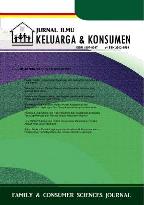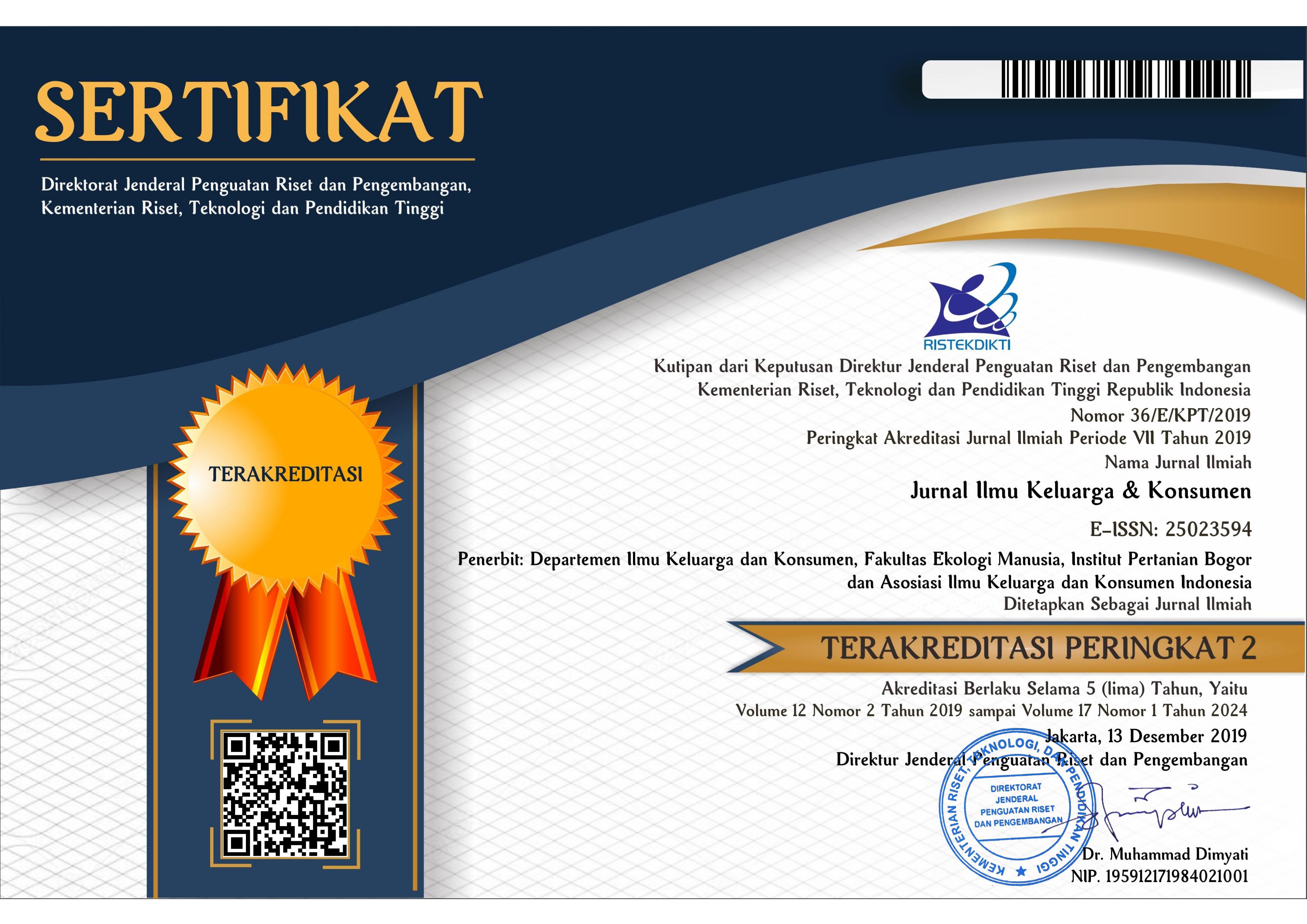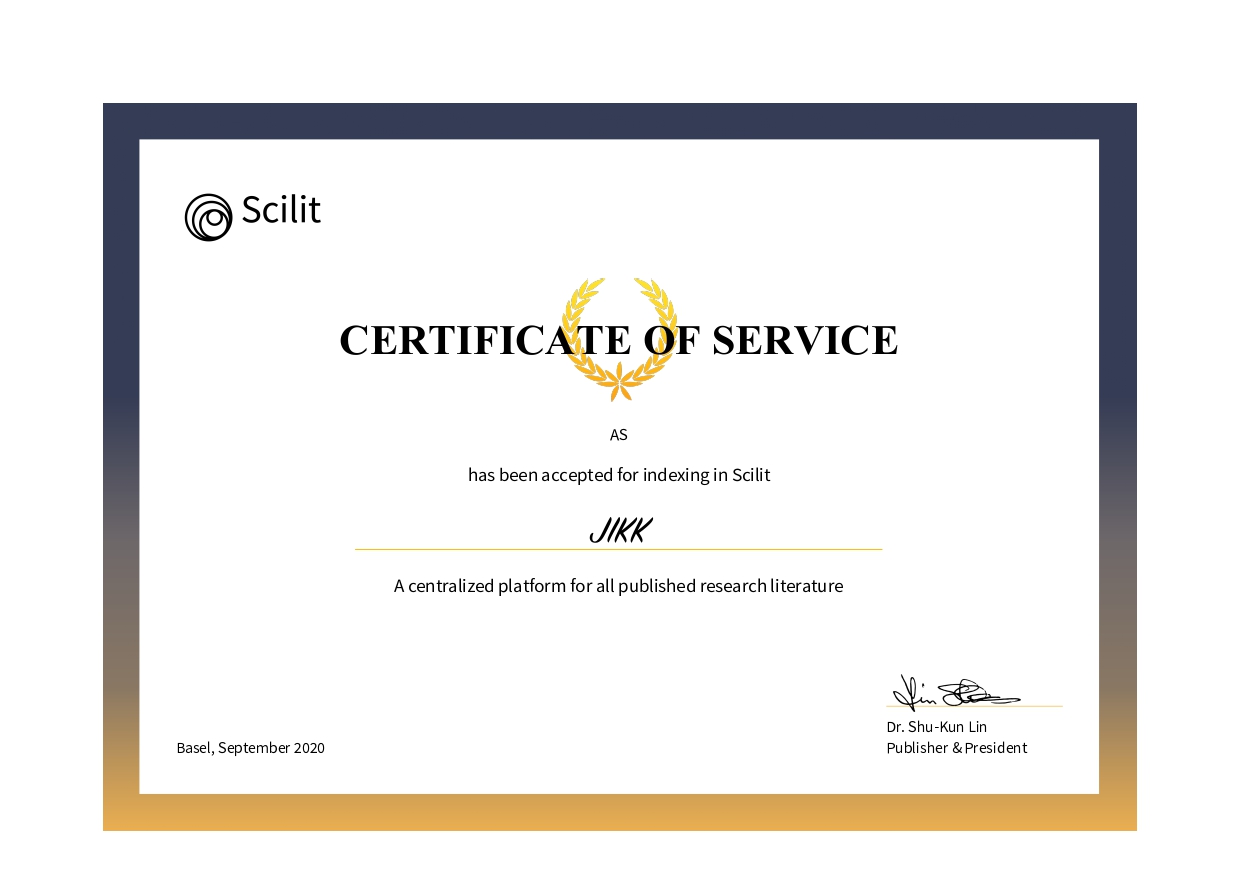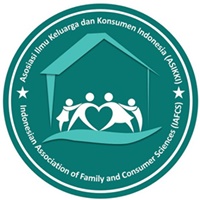Early Education Matter: The Power Of Child-Parent Attachment Quality In Predicting Child’s Executive Function
Abstract
Parental caregiving is a cornerstone of child's early education primarily their cognitive performance. A positive attachment quality has proven to contribute to the child's higher-order thinking process, supported by cool and hot executive function (EF) skills. However, previous studies still found inconsistencies, particularly of which cool and hot EF components are being affected. Moreover, the presence of mother and father figure in parenting enriched the finding of child EF, but studies about father's figure related to child attachment quality are still limited. This study was a preliminary study that aimed to investigate the relationship between child's attachment quality with both mother and father and child's cool and hot EF on preschoolers. Child's attachment quality was assessed using ASCT (Attachment Story Completion Task) and child's EF was measured using Executive Function Battery Test. All of the activities were videotaped. Partial correlation was used to investigate the relationship between child attachment quality and child EF while gender, age and child attachment with one of the attachment figure are controlled. The result found that controlling variables influence the correlation between child's attachment quality and EF skills. This study presented important finding to improve the quality of early education through ameliorating parent-child relationship.
References
Anderson, P., & Reidy, N. (2012). Assessing Executive Function in Preschoolers. Neuropsychology Review, 22, 345-360.DOI 10.1007/s11065-012-9220-3
Belsky, J., & de Haan, M. (2011). Annual Research Review: Parenting and children's brain development: The end of the beginning. Journal of Child Psychiatry, 52 (4), 409-428. DOI 10.1111/j.1469-7610.2010.02281.x
Bernier, A., Beauchamp, M., Carlson, S., & Lalonde, G. (2015). A secure base from which to regulate: Attachment security in toddlerhood as a predictor of executive functioning at school entry. Developmental Psychology, 51 (9), 1177-1189. DOI 10.1037/dev0000032
Bernier, A., Carlson, M., & Whipple, N. (2012). From external regulation to self-regulation: Early parenting precursors of young children's executive functioning. Child Development, 81, 326-339. DOI 10.1111/j.1467-8624.2009.01397.x
Blair, C. (2016). Executive function and early childhood education. Current Opinion in Behavioral Science, 17, 1-6.
Blair, C., & Razza, R. (2007). Relating effortful control, executive function, and false belief understanding to emerging math and literacy ability in kindergarten. Child Development, 78 (2), 647-663. DOI 10.1111/j.1467-8624.2007.01019.x
Bohlin, G., Eninger, L., Broki, K., & Thorell, L. (2012). Disorganized attachment and inhibitory capacity: Predicting externalizing problem behaviors. Journal of Abnormal Child Psychology, 40, 449-458. DOI 10.1007/s10802-011-9574-7
Bretherton, I. (2010). Father in attachment theory and research: A review. Early Child Development and Care, 180, 9-23.DOI 10.1080/03004430903414661
Bureau, J.-F., Yurkowski, K., Schimedel, S., Martin, J., Moss, E., & Pallanca, D. (2014). Making Children Laugh: Parent-Child Dyadic Synchrony and Preschool Attachment. Infant Mental Health Journal, 35 (5), 482-494.DOI10.1002/imhj.21474
Carlson, S. (2009). Social Origins of Executive Function Development. New Directions for Child and Adolescent Development, 61-74.
Carlson, S., White, R., & Davis-Unger, A. (2014). Evidence for a relation between executive function for early reading development and education. Early Education and Development, 29, 24-36.
Carlson, S., Zelazo, P., & Faja, S. (2013). Executive Function. Oxford Handbook of Development Psychology, 706-742. DOI 10.1093/oxfordhb/9780199958450.001.0001
Cassidy, J., & Shaver, P. (2016). Handbook of Attachment: Theory, Research, and Clinical Applications. New York: The Guilford Press.
Cartwright, K. (2012). Insights from cognitive neuroscience: The important of executive function for early reading development and education. Early Education and Development, 23, 24-36.DOI 10.1080/10409289.2011.615025
Cole, P., Duncan, L., & Blaye, A. (2014). Cognitive flexibility predicts early reading skills. Frontiers in Psychology, 5, 1-8.DOI 10.3389/fpsyg.2014.00565
Diamond, A. (2013). Executive Functions. Annual Review of Psychology, 64, 135-168. DOI 10.1146/annurev-psych-113011-143750.
Farnfield, S., & Holmes, P. (2014). The Routledge Handbook of Attachment: Assessment. New York: Routledge.
Garon, N., Bryson, S., & Smith, I. (2008). Executive function in preschoolers: A review using integrative framework. Psychological Bulletin, 134 (1), 31-60. DOI 10.1037/0033-2909.134.1.31
Hendrawan, D., Fauzani, F., Fatimah, H., Wijaya, F., & Kurniawati, F. (2015). The construction of executive function instruments for early child ages in Indonesia: A pilot study. International Conference of Child and Adolescence Mental Health. Jakarta.
Hertyas, I., Hendrawan, D., Arbiyah, N., & Nurbatari, R. (2018). The contribution of parental autonomy support and control on executive function among preschooler. In Amarina A. Ariyanto, H. Muluk, P. Newcombe, F. P. Piercy, E. Kristi Poerwandari, Sri Hartati R. Suradijono, Diversity in unity: Perspective from Psychology and Behavioral Sciences. Taylor & Francis Group, London, pp. 481-488.
Hughes, C., & Ensor, R. (2009). How do families help or hinder the emergence of early executive function? In C. Lewis, & J. Carpendale, Social interaction and the development of executive function, 123, (pp. 35-50). New Directions in Child and Adolescent Development. DOI 10.1002/cd.234
Jacobsen, T., Huss, M., Fendrich, M., Kruesi, M., & Ziegenhain, U. (1997). Children's ability to delay gratification: Longitudinal relations to mother-child attachment. The Journal of Genetic Psychology, 158 (4), 411-426. DOI: 10.1080/00221329709596679
Lewis, C., & Carpendale, J. I. M. (2009). Introduction: Links between social interaction and executive function. In C. Lewis & J. I. M. Carpendale (Eds.), Social interaction and the development of executive function. New Directions in Child and Adolescent Development, 123, 1–15
Marvin, R. S., Britner, P. A., & Russel, B. S. (2016). Normative Development: The Ontology of Attachment in Childhood. In J. Cassidy, & P. R. Shaver, Handbook of Attachment: Theory, Research, and Clinical Applications (p. 273). New York: The Guilford Press.
Meuwissen, A., & Carlson, S. (2015). Fathers matter: The role of father parenting in preschoolers' executive function development. Journal of Experimental Child Psychology, 140, 1-15. DOI 10.1016/j.jecp.2015.06.010
Moss, E., Tarabulsy, M. G., St-Georges, R., Dubois-Comtois, K., Cyr, C., Bernier, A., Lecomte, V. (2014). Video-feedback intervention with maltreating parents and their children: Program implementation and case study. Attachment & Human Development, 16, 329-342. DOI: 10.1080/14616734.2014.912486
Posada, G., Kaloustian, G., Richmond, M., & Moreno, A. (2007). Maternal secure base support and preschoolers' secure base behavior in natural environments. Attachment and Human Behavior, 9 (4), 393-411. DOI: 10.1080/14616730701712316
Raikes, H., & Thompson, R. (2008). Attachment security and parenting quality predict children's problem solving, attribution, and loneliness with peers. Attachment and Human Development,, 10, 319-344.
Rosche, J. (2013). Early attachment and the development of executive function and self-regulatory abilities. Unpublished Dissertation.
Schore, A. (2001). Effect of a secure attachment: Relationship on right brain development, affect regulation, and infant mental health. Infant Mental Health Journal, 22, 7-66. DOI 10.1002/1097-0355(200101/04)22:1<7::AID-IMHJ2>3.0.CO;2-N
Setyowati, Y., Krisnatuti, D., & Hastuti, D. (2017). Pengaruh kesiapan menjadi orang tua dan pola asuh psikososial terhadap perkembangan sosial anak. Jurnal Ilmu Keluarga dan Konsumen, 95-106. DOI 10.24156/jikk.2017.10.2.95
Thorell, L., Rydell, A., & Bohlin, G. (2012). Parent-child attachment and executive functioning in relation to ADHD symptoms in middle childhood. Attachment & Human Development, 14, 517-532. DOI: 10.1080/14616734.2012.706396
Towe-Goodman, N., Willoughby, M., Blair, C., Gustafson, H., Mills-Koonce, W., & Cox, M. (2014). Fathers' sensitive parenting and the development of early executive functioning. Journal of Family Psychology, 28 (6), 867-876. DOI 10.1037/a0038128
Verschueren, K., & Marcoen, A. (1999). Representation of Self and Socioemotional Competence in Kindergartners: Differential and Combined Effect of Attachment to Mother and to Father. Child Development, 70, 183-201.DOI 10.1111/1467-8624.00014
Villano, N., Sapuppo, W., Sannino, A., Parrella, R., Bisogno, R., & Caviglia, G. (2014). Working memory abilities, attachment relationship and learning process in children of primary school age: An empirical research. Research in Psychotherapy: Psychopathology, Process, and Outcome, 21-32. DOI 10.4081/ripppo.2014.134
Waters, F. S., & Thompson, A. R. (2016). Children's perceptions of emotion regulation strategy effectiveness: Link with attachment security. Attachment & Human Development, 1-19. DOI 10.1080/14616734.2016.1170051
Welsh, J. S., Nix, R. L., Blair, C., Bierman, K. L., & Nelson, K. E. (2010). The Developmment of Cognitive Skills and Gains in Academic School Readiness for Children From Low Income Families. Journal of Educational Psychology, 102 (1), 45-53
Whipple, N., Bernier, A., & Mageau, G. (2011). A dimensional approach to maternal attachment state of mind: A relations to maternal sensitivity and maternal autonomy support. Developmental Psychology, 47 (2), 396-403. DOI 10.1037/a0021310.
Williford, A., Carter, L., & Pianta, R. (2016). Attachment and School Readiness. In J. Cassidy, & P. Shaver, Handbook of Attachment: Theory, Research and Clinical Applications (pp. 966-982). New York: The Guilford Press.
Zelazo, P. (2006). The dimensional change card sort (DCSS): A method of assessing executive function in children. Natura Protocols-Electronic Edition. DOI 10.1038/nprot.2006.46
Zelazo, P., & Carlson, S. (2012). Hot and Cool Executive Function in Childhood and Adolescence: Development and Plasticity. Child Development Perspective, 6, 354-360. DOI 10.1111/j.1750-8606.2012.00246.x
Zelazo, P., & Muller, U. (2011). Executive function in typical and atypical development. In U. Goswami, Blackwell Handbook of Childhood Cognitive Development. USA: Blackwell Publishers Ltd.
Copyright (c) 2018 Jurnal Ilmu Keluarga & Konsumen

This work is licensed under a Creative Commons Attribution-ShareAlike 4.0 International License.
Authors submitting manuscripts should understand and agree that copyright of manuscripts published are held Jurnal Ilmu Keluarga & Konsumen. The statement to release the copyright to Jurnal Ilmu Keluarga dan Konsumen is stated in Copyright Release Form. Copyright encompass exclusive rights to reproduce, to distribute, and to sell any part of the journal articles in all form and media. The reproduction of any part of this journal is allowed with a written permission from Jurnal Ilmu Keluarga dan Konsumen.









